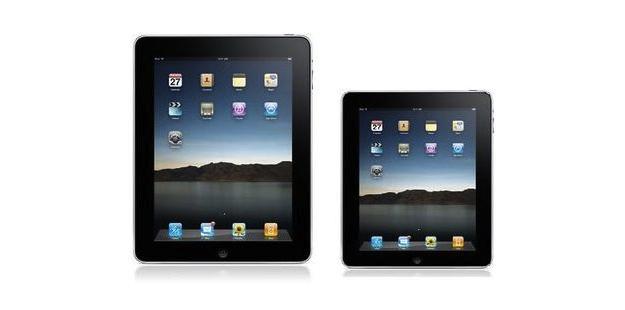 Rumors that Apple will launch a 7-inch version of their iPad tablet have been circulating ever since the very first model came out a couple of years ago. They’ve recently resurfaced too, suggesting that a 7-inch version could be unveiled alongside the iPad 3 in 2012.
Rumors that Apple will launch a 7-inch version of their iPad tablet have been circulating ever since the very first model came out a couple of years ago. They’ve recently resurfaced too, suggesting that a 7-inch version could be unveiled alongside the iPad 3 in 2012.
This resurgence is almost certainly related to the success of the Amazon Fire, which boasts a 7-inch screen with a 600 x 1024 pixel resolution that has been described as “just right.” However the late Steve Jobs didn’t agree, famously denouncing tablets of that size as “dead on arrival”.
Now, an analyst from Wedge Partners has joined in the discussion, telling AllThingsD.com not to expect an iPad 7-inch in 2012. He adds that the company has been testing prototypes for some time, but are not expected to release them, at least certainly not next year.
A smaller tablet is associated by many with a lower price point, however Apple could follow the same strategy it has employed with the iPhone 4 and iPhone 4S to cover this sector of the market.
The dual-core iPad 2 is hardly a creaky old beast and easily keeps up with a high percentage of newly released tablets, making it sensible to keep it in production and drop the price accordingly when the iPad 3 launches. Like the iPhone 4 it’ll sit alongside its sparkly new brother quite happily. The analyst agrees, saying they see Apple offering a single 16GB iPad 2 model at either $349 or $399.
Recent speculation places the iPad 3 for launch around February to March 2012.
Editors' Recommendations
- Best iPad Memorial Day deals: Get an Apple tablet from just $245
- I spent over $2,000 on the new iPad Pro. Here’s why I already love it
- Does the iPad Pro (2024) come with a pen?
- This hidden iPad Pro Easter egg is unbelievably cool
- Dear Apple, I don’t care how thin the iPad Pro is



